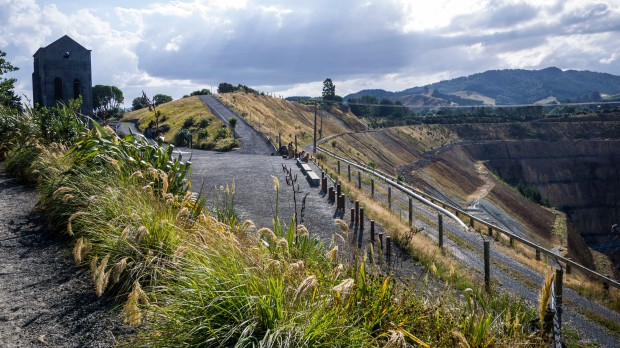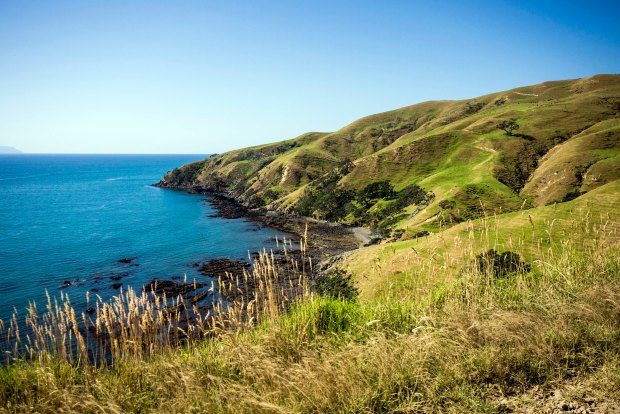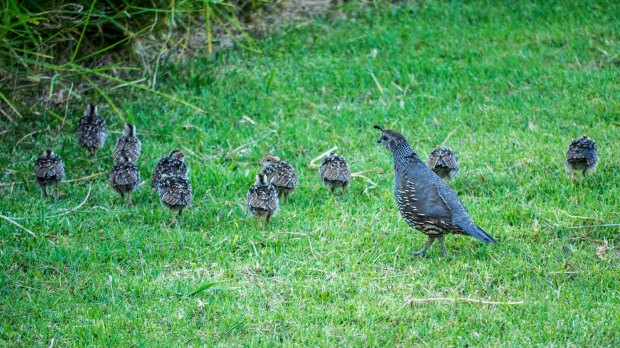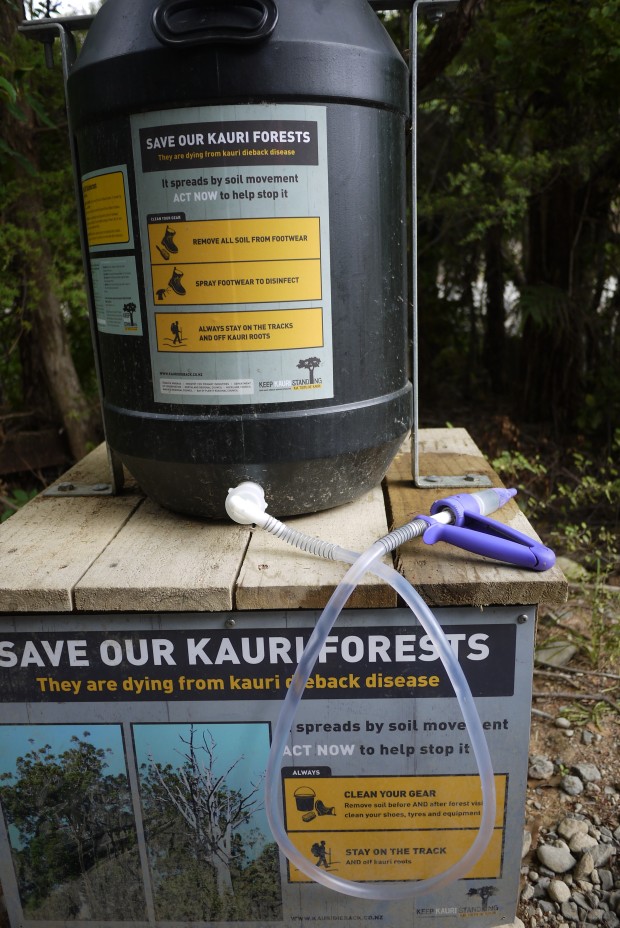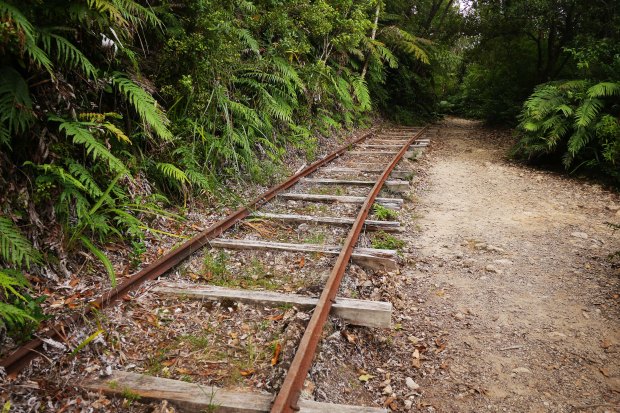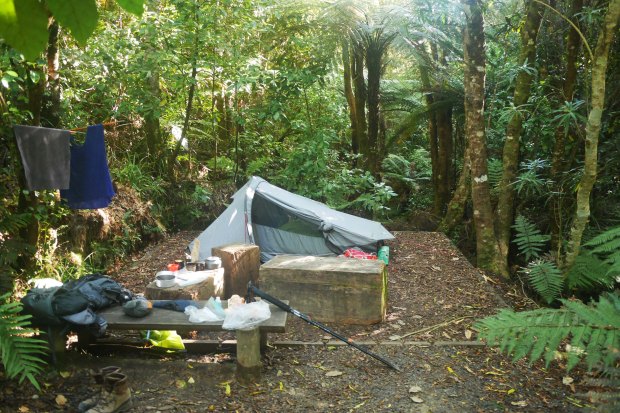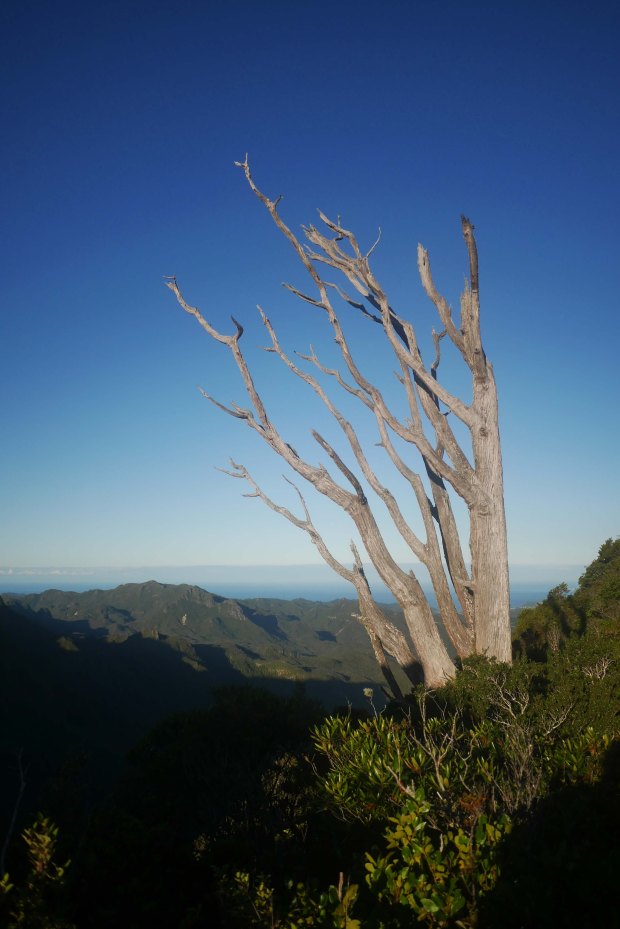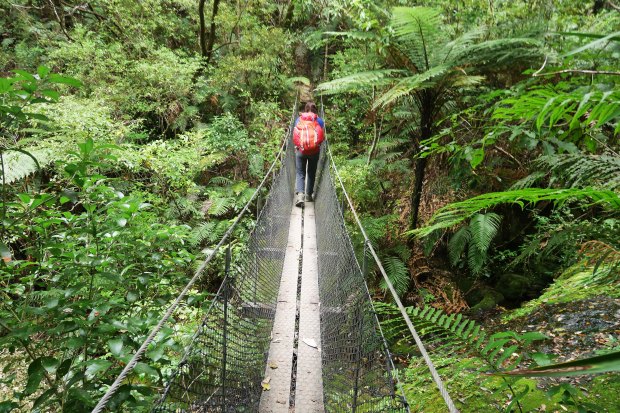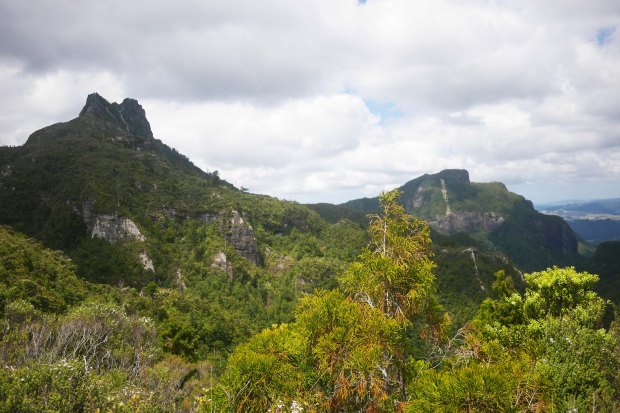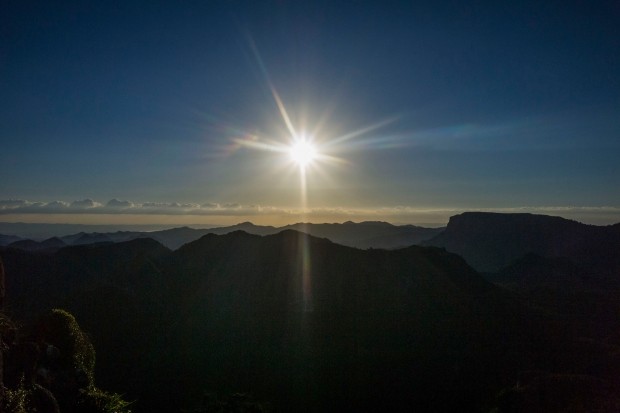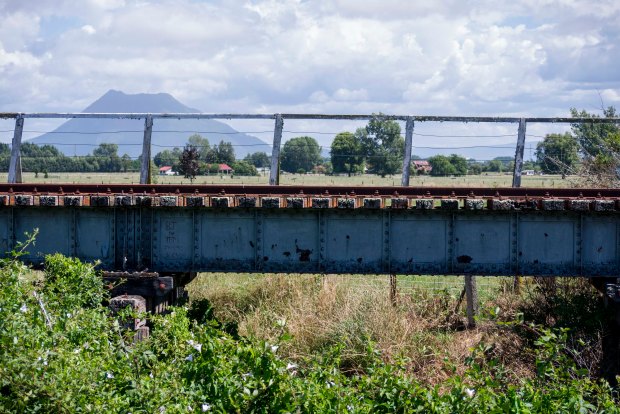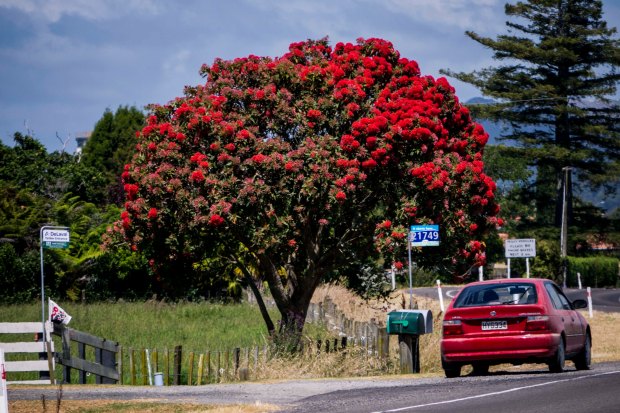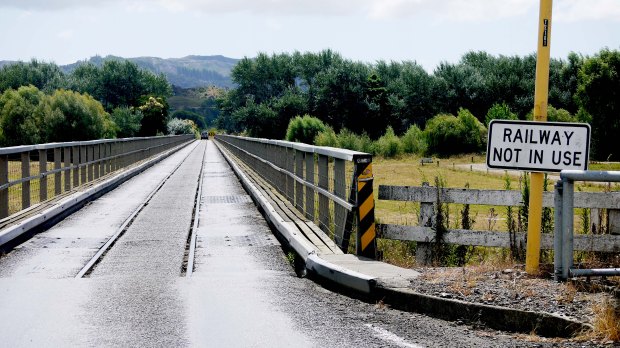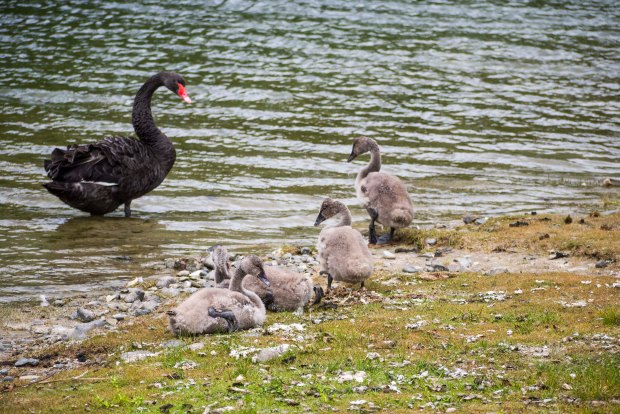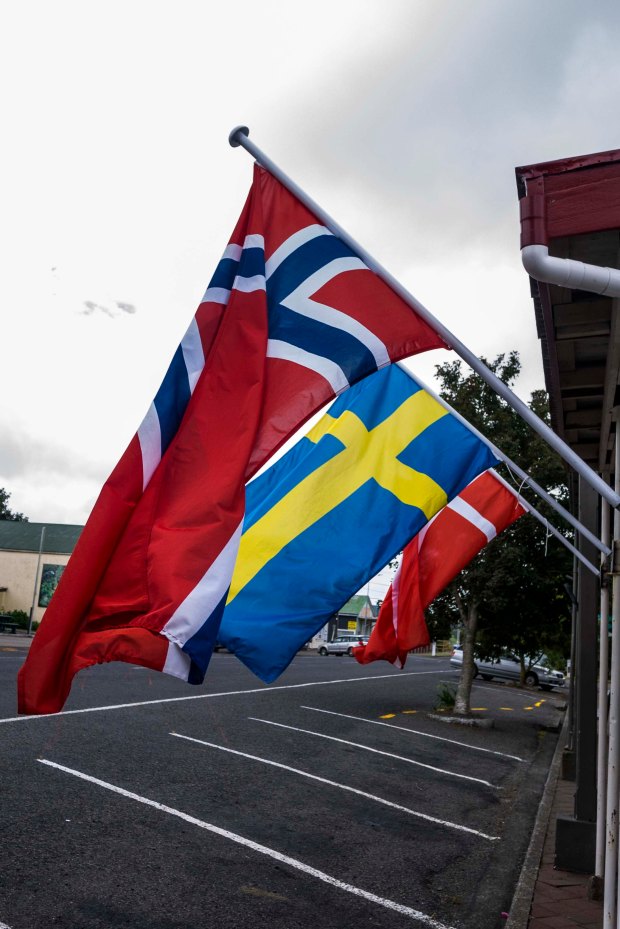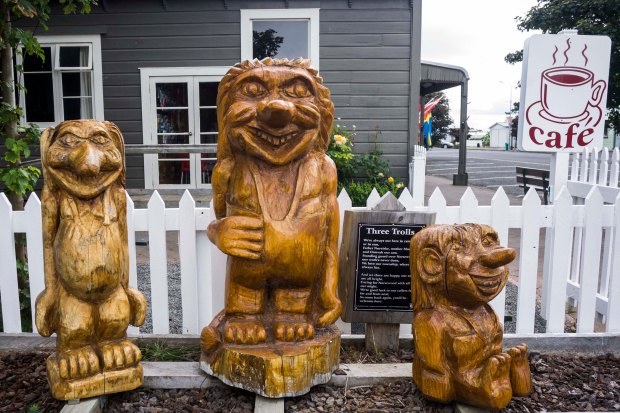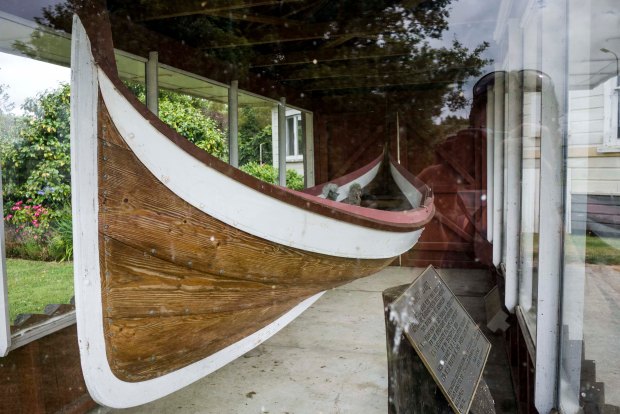Today is my birthday and I’m sitting in the ferry that is bringing us to the south island, yay!
This is where we’ve been the last 3 weeks:
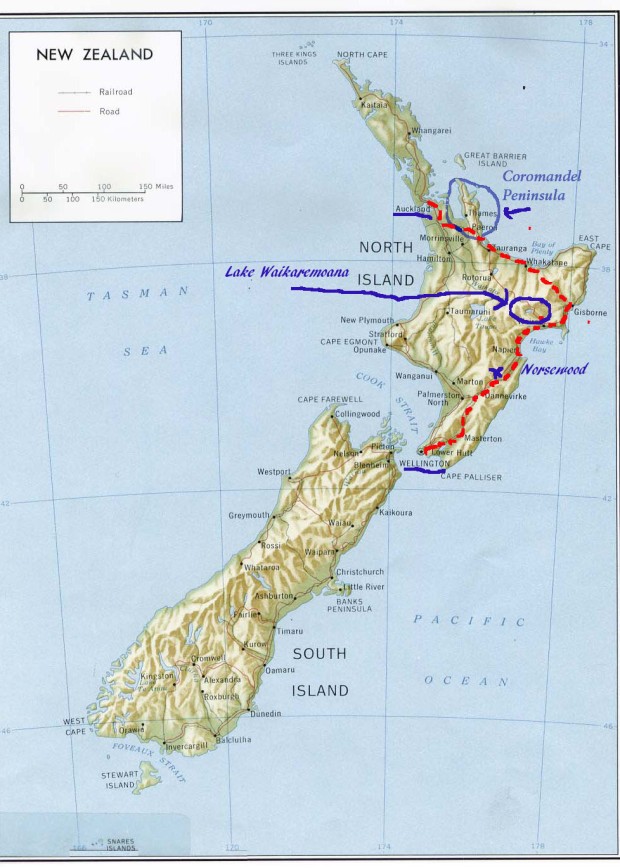 So it ended up taking a couple of weeks to do things properly but there we are, ready to head off, with our brand-new old car. It’s red and (so far) reliable.
So it ended up taking a couple of weeks to do things properly but there we are, ready to head off, with our brand-new old car. It’s red and (so far) reliable.
Our next stop was Waihi beach in the Bay of Plenty, named back in 1769 when Captain Cook arrived there and was given supplies from the abundant resources of the Maori. Today a lot of fruits and vegetables are cultivated there and you cannot ignore the giant hedges surrounding kiwi orchards to protect them from the wind. Oh and the gold mines too: these are presently devastating the nearby town as the tunnels dug underneath are sinking the houses.
In Waihi beach we were warmly welcomed by Matthew’s sister’s boyfriend’s family. If you travel yourself you know how amazing it feels to be offered a home base for a few days. From there we explored the Coromandel Peninsula.
The hike we chose leads to a place called the Pinnacles. While not a mind blowing hike, this track has a very interesting history.
After driving 20km up a gravel road in the Kauaeranga valley, we reached the beginning of the trail. This area is home to native Kauri trees that are dying from a fungus-like disease called kauri dieback, spread on the roots by hikers. That is why we are asked to rinse our shoes and hiking poles at the start of the trail and not wander off the path.
A long time ago, kauri trees were covering these hills and were important in the Maori culture, in the mythology, rituals, wars, art and every day life. Some trees were so massive that they were given names and declared chief of the forest. Occasionally their massive trunks were used to build boats and their resin was collected for various purposes like insecticide or tattoos.
The use of gum and timber obviously appealed to Europeans too and soon they started chopping kauri trees and transporting them down the mountain, either using the water force created by the dams or via railways. Unfortunately they take many many many years to grow but it was too late.
All this happened between between 1850 and 1930 and pieces of railways can still be spotted from the Billygoat track that we chose. The sun is hiding behind the clouds that day which made the hike a lot easier as it is pretty (actually vey) steep all the way and it gets really (really really) hot in New Zealand when the sun shines. It takes about 4,5 hours to reach the beautiful campsite, some 45 minutes away from the Pinnacles, but close to the beautiful Pinnacles hut.

Dam near the Pinnacles hut. The idea is to stop the water and release it to bring logs down using the power of the water. It worked, even though some logs got broken on the way.
We had big plans for side trips back but the forecast turned pretty wet so we decided to go back to Waihi beach and head south. There are hips of exciting things to do on the north island but the temperatures still being way above comfortable hiking ones, we decided to head south to spend a few days in Wellington before crossing over to the south Island.
We drove through the vineyards of Gisborne to spend a couple of nights by Lake Waikaremoana and crossed the lamb country further south.
I requested a sightseeing stop at a place called Norsewood where Scandinavians settled down during the New Zealand wars in the 1860s, when Brits didn’t want to come downunder anymore. It really looks and feels like a little Norway, I felt homesick! Close to Norsewood is the Danish settlement Dannevirke, bigger but not as charming.



